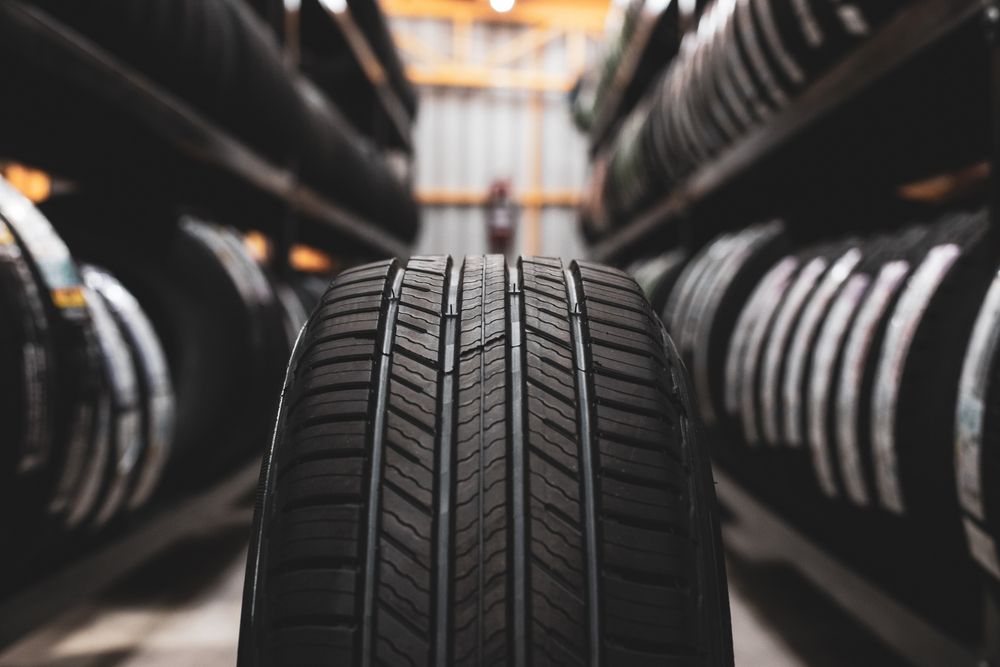Whether you’re a car enthusiast looking to upgrade your ride’s performance or simply need a replacement for worn-out tires, buying wheels and tires can be both exciting and overwhelming. With so many brands, materials, and sizes on the market, how do you choose the right set? This article aims to guide you through the most important factors to consider, from sizing and performance to budgeting and maintenance. By following these tips, you’ll be better prepared to make a purchase that not only fits your vehicle but also enhances its look and function.
1. Determine Your Goals and Priorities
Before diving into the specifics, ask yourself why you’re in the market for new wheels and tires:
- Replacement: Are your current tires simply worn out or damaged? In this case, you may just want a direct replacement that matches your vehicle’s original specifications.
- Upgrade: Are you aiming for improved performance, aesthetics, or both? Different types of wheels and tires can enhance handling, fuel efficiency, braking, or off-road capabilities.
- Season-Specific Needs: Are you buying winter tires or looking for better traction in wet conditions? Some drivers maintain two sets—one for summer and one for winter—to maximize safety and performance year-round.
Having a clear idea of your priorities ensures you don’t overspend on features you don’t need or skimp on qualities that matter most to you.
2. Know Your Wheel and Tire Size Specifications
One of the biggest mistakes people make is buying wheels or tires that don’t fit their vehicle properly. To avoid this:
- Check Your Owner’s Manual
Your manual will list recommended tire sizes, load indexes, and speed ratings. You can also find this information on a placard inside your door frame or sometimes on the fuel door. - Look at the Existing Tires
The sidewall of your current tires will show a code like P215/55R16. The numbers and letters indicate width, aspect ratio, construction type (radial), and rim diameter. Ensure any new set matches (or is compatible with) these vital stats. - Consider Wheel Offset and Bolt Pattern
The offset (how far the mounting surface is from the wheel’s centerline) and bolt pattern must match your vehicle’s hub to ensure proper fitment. Mismatching wheels can lead to handling issues and even damage to your suspension.
Working with the correct size and specs not only prevents installation headaches but also ensures your vehicle performs safely and efficiently.
3. Choose the Right Tire Type for Your Driving Conditions
Tires come in various categories, each designed with a specific purpose in mind:
- All-Season Tires
A common choice for everyday driving, these tires provide decent grip in most conditions—rain, light snow, and dry roads—without excelling in any one area. If you live in a region with mild winters, all-seasons might be enough. - Summer Tires
Engineered to deliver superior traction and performance on wet and dry roads in warm weather, summer tires often feature stickier rubber compounds. However, they become hard and lose traction in cold temperatures, making them unsuitable for winter. - Winter Tires (Snow Tires)
With specialized tread patterns and rubber designed for cold weather, winter tires offer better grip on snowy, icy, or slushy roads. If you face harsh winters, having a set of winter tires is a game-changer in terms of safety. - All-Terrain or Off-Road Tires
Designed for trucks and SUVs, these tires offer extra durability and grip on rough terrain. The trade-off is that they can produce more road noise and slightly lower fuel efficiency. - High-Performance or Track Tires
Geared toward sports cars or track enthusiasts, these tires prioritize grip and handling over longevity and ride comfort. They can be quite expensive and wear down faster, so they’re not ideal for casual drivers.
Selecting a tire type that aligns with your climate and driving style ensures a comfortable, safe ride—and protects your investment.
4. Consider Wheel Materials and Construction
If you’re also upgrading or replacing wheels (rims), material choice plays a big role in performance, appearance, and price:
- Steel Wheels
- Pros: Durable, budget-friendly, resistant to damage from potholes.
- Cons: Heavier, which can slightly reduce fuel efficiency and slow acceleration. Typically less attractive, though wheel covers can improve appearance.
- Alloy Wheels
- Pros: Lighter than steel, offering better handling, braking, and fuel economy. Available in various stylish designs.
- Cons: Generally more expensive and more prone to cosmetic damage (like scratches or curb rash).
- Forged Wheels
- Pros: Stronger and lighter than cast alloy wheels, can handle higher stress and impact. Often used in high-performance or luxury applications.
- Cons: Significantly more expensive due to the complex manufacturing process.
Choose based on a balance of aesthetics, performance, and cost. For everyday drivers, alloy wheels often strike a good middle ground between steel and forged options.

5. Budget Wisely and Shop Around
Like most major purchases, it pays to do some research and comparison shopping:
- Set a Realistic Budget
High-end wheels and tires can get pricey, but going too cheap might mean sacrificing quality or longevity. Aim for a mid-range option that offers durability and performance appropriate for your needs. - Compare Local Shops and Online Retailers
Some big-box tire centers may offer package deals or special financing. Online retailers can sometimes provide lower prices, but keep in mind shipping and installation costs. - Look for Sales and Promotions
Seasonal deals—like spring or fall tire sales—can yield substantial savings. Additionally, watch for mail-in rebates or promotions from major tire manufacturers.
Balancing cost with quality helps you avoid overspending while still ending up with a set of wheels and tires that keep you safe and satisfied.
6. Inspect Tire Ratings and Labels
The tire market is crowded with options, so it’s helpful to know how to interpret the sidewall and label information:
- Speed Rating
Indicated by a letter (e.g., S, T, H, V, Z), it shows the maximum speed capability under recommended conditions. Most street vehicles don’t need extremely high speed ratings, so be realistic about your driving habits. - Load Index
A numerical code that indicates the tire’s maximum carrying capacity. Ensure it meets or exceeds your vehicle’s requirements, especially if you drive an SUV or often carry heavy loads. - Treadwear, Traction, and Temperature Ratings
Part of the Uniform Tire Quality Grade (UTQG). Treadwear indicates how quickly tires might wear out (higher numbers mean longer life), traction measures wet-stopping performance (rated AA, A, B, or C), and temperature rates heat resistance. - Fuel Efficiency and Noise Ratings (in some regions)
Some labels indicate how the tire affects fuel consumption and road noise levels. If comfort and efficiency are priorities, opt for lower noise levels and higher fuel-efficiency scores.
These ratings serve as useful benchmarks to gauge overall quality and performance, helping you pick the right tire for your needs.
7. Think About Aesthetics and Style
There’s more to wheels than function. A good set of rims can dramatically change your car’s appearance:
- Finish and Color
Alloy wheels come in various finishes—silver, black, chrome, or even custom colors like bronze or graphite. Pick one that complements your car’s paint job and your personal taste. - Size Up—or Down—With Caution
Some people like to upsize wheels for a more aggressive, modern look. However, larger wheels typically mean thinner tire sidewalls, which can result in a firmer ride and increased risk of wheel damage from potholes. Always consult a professional or use a reputable wheel-sizing guide to ensure the diameter and offset still work with your suspension and brakes. - Balance Performance and Comfort
Ultra-low-profile tires may look sleek but can make daily driving less comfortable. Striking a balance between style and practicality will lead to a more enjoyable ownership experience.
8. Installation and Alignment Matter
Once you’ve settled on the right wheels and tires, proper installation is crucial:
- Professional Mounting and Balancing
Even if you buy online, have your tires mounted and balanced by a trusted mechanic or tire center. Proper balancing ensures a smooth ride and reduces uneven wear. - Wheel Alignment
Alignments help ensure your tires wear evenly and that your car handles safely. If you’re getting new tires, it’s often wise to have an alignment done at the same time. - Check Lug Nut Torque
Wheels must be securely fastened with the correct torque setting. Overtightening or undertightening can lead to damage or, in the worst case, a wheel coming loose.
When done correctly, professional installation and alignment can add thousands of miles to your tires’ life and keep your vehicle operating at its best.
9. Maintain Your New Wheels and Tires
After investing time and money into choosing the right set, protect them with proper care:
- Monitor Tire Pressure
Underinflated tires wear faster, lower your fuel economy, and can be unsafe. Check tire pressure at least once a month and before long road trips. - Rotate Tires Regularly
Regular rotation (around every 5,000 to 8,000 miles) helps promote even wear. - Inspect Tread Depth
Use the penny test or a tread-depth gauge. Most tires need replacing once they hit 2/32 of an inch (1.6 mm) of tread depth or start showing other signs of wear.
Consistent maintenance extends tire life, maximizes performance, and can even save you money on repairs and fuel over time.
Buying car wheels and tires involves more than just picking a size that fits. From understanding proper tire types and materials to setting a practical budget and maintaining your new setup, each step ensures that you’ll get maximum value and safety from your purchase. Whether you’re upgrading for aesthetics or seeking to improve traction and comfort, staying informed about fitment, quality ratings, and ongoing care helps you invest in a set of wheels and tires that truly elevates your driving experience. Keep these tips in mind, and you’ll be well on your way to making a confident, well-informed choice.






